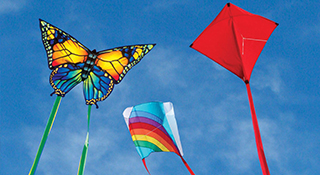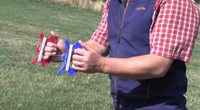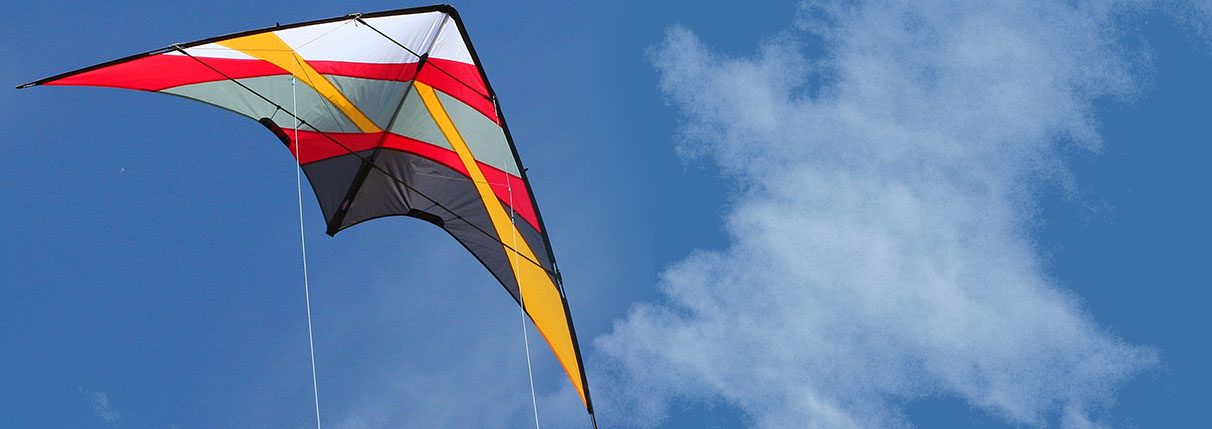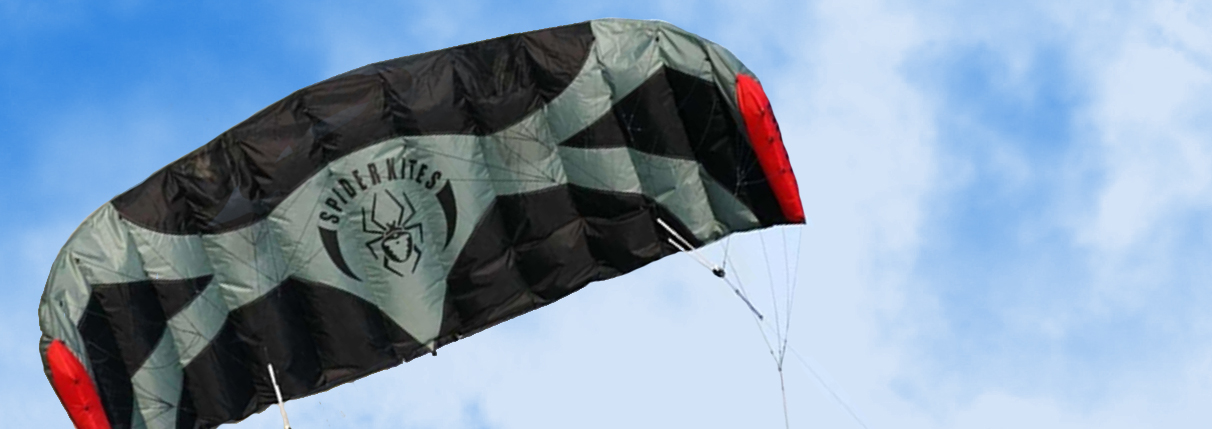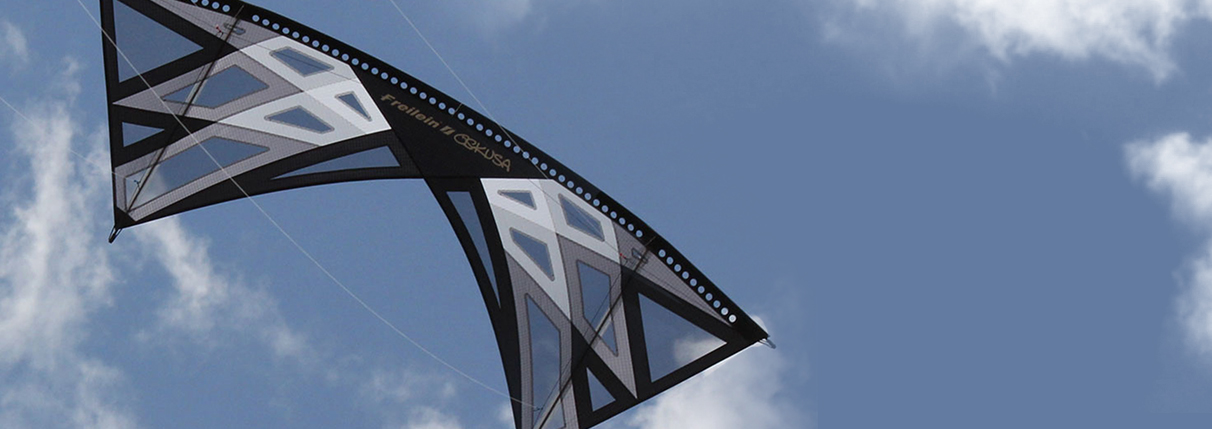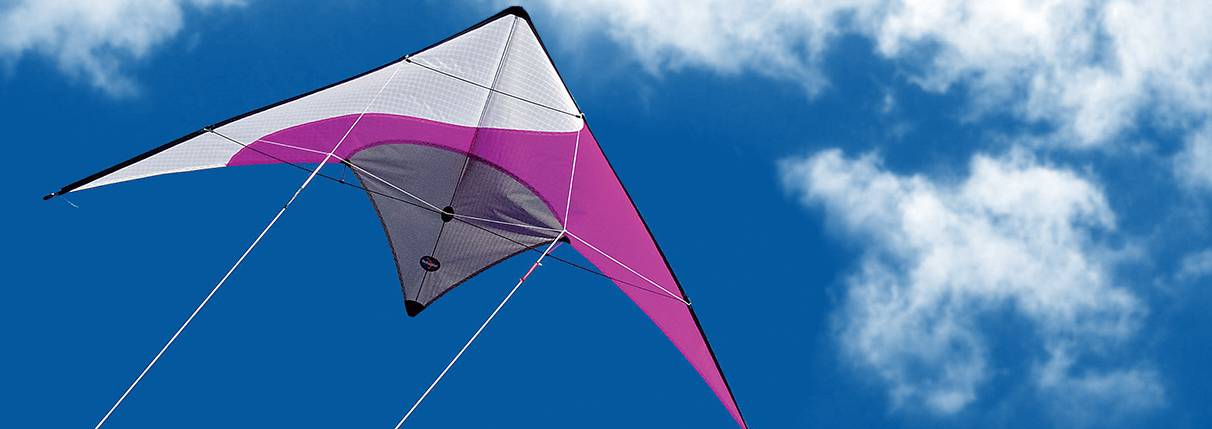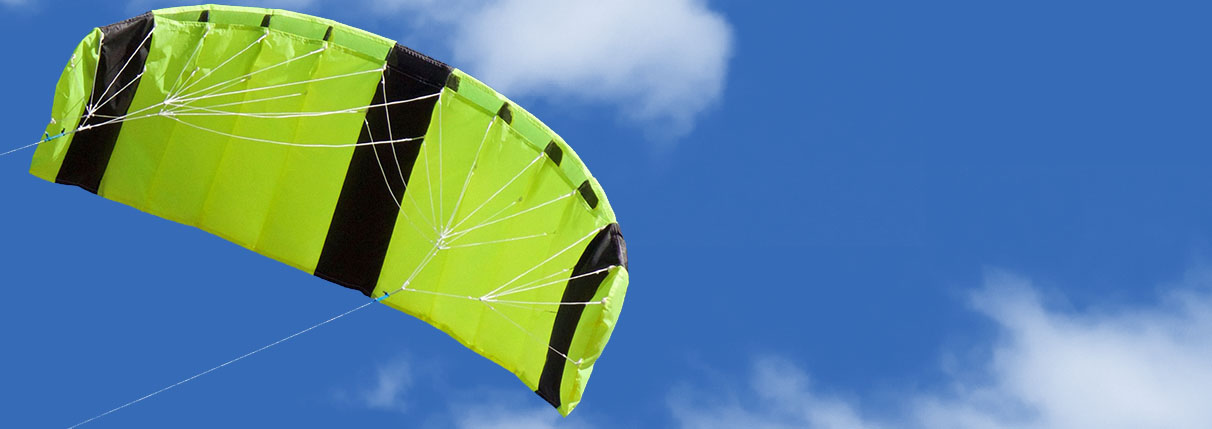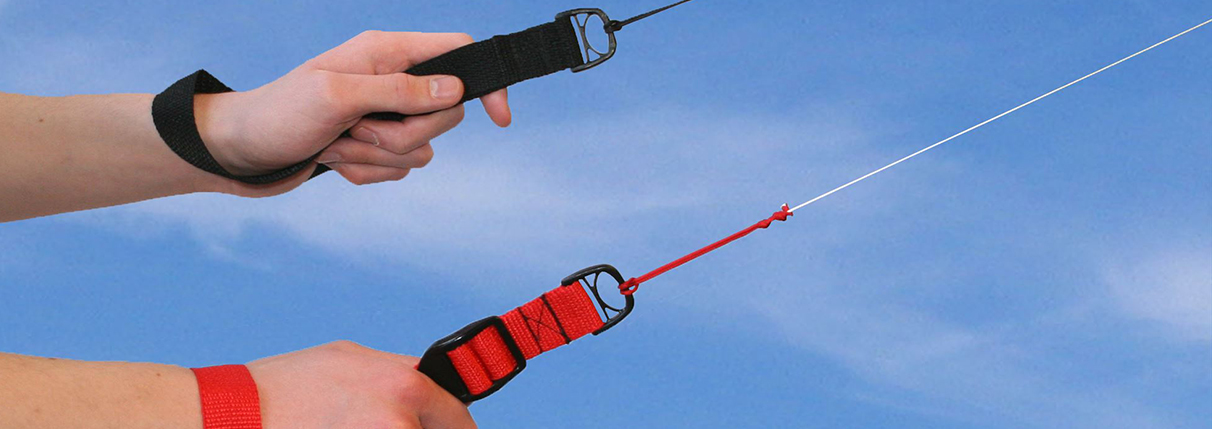- Category

Looking for excitement? Get your hands on a stunt kite, and you won't want to let go. Flown on two or four lines, these sports cars of the kite world can loop and dive at speeds of 60 mph or more. To make it easy to choose the right kite, we test and rate our stunt kites for performance and skill level.
QUICK AND RESPONSIVE, these versatile kites can take you from your first flight to your first trick.
Kites on the cutting edge of sport kite design, these trick kites not only do more tricks, but they do them faster. It’s easy to initiate and pull out of wind-spilling punch turns and stalls. In a strong wind, by the time you think about turning, it’s done. In light winds, some trick kites tend to oversteer, which a good flier can use to their advantage. Basic tricks like the Side-Slide and Snap Stall will be second nature for a trick kite and allow you to progress to more advanced tricks like the Axel, Pancake, Fade, 540 Flat Spin and Lazy Susan. Although foils can be a good choice for learning two-line basics and also a good choice for power kiting they can’t do the wide range of acrobatic tricks that a framed kite can. If your stunt kite flying could use a new shot of adrenaline, you’ll find it in a framed trick kite. These kites require experience and reward it.
Don’t forget the thrill factor when you select your sport kite. Small stunt kites can fly well, but they can’t change the laws of physics. The sensations of stunt kite flying tend to get reduced along with the size. Big kites are more impressive in the sky, make more noise and are more exciting to fly. But most importantly, Power Kites develop tremendous pull in strong winds. The more extreme edge of stunt kite flying, Power Kites appeal to the risk taker who likes the pull and excitement at the max. The danger is obvious, but as with many sports, it’s part of the attraction. Just remember, play hard but play safe. We recommend that you follow all safety instructions and to make sure that message is clear, we require a signed “Acknowledgement of Risk” when you purchase power kites from Into The Wind that are potentially hazardous and dangerous. It’s best to familiarize yourself with any new power kite by flying in light winds to begin with and progressing to stronger winds as you gain more experience. Nothing stops the fun faster than an injury.
With two lines, you have control of your kite’s direction of flight; you can turn right and left, make loops and spins but the kite always flies forward. Four line kites let you control the angle of the wing to the wind and consequently, all of its flight characteristics: speed, direction and pull. Quad line kites can move forward or reverse, fly sideways, pivot on a wing tip, rotate on dead center or stop and hover in mid-air, at the speed you choose. Center pivot turns are done simply by making one side of the kite go forward and the other side backward. It’s possible to control the power of the kite just by changing its angle to the wind. The versatility of quad line kites makes them a great choice for team flying. Quad team flying is one of the most visible kiting pastimes in the world with dozens of exhibition teams worldwide and mega flies with 80+ pilots in formation. Watch a video and you’ll be inspired to take the quad line challenge.
If you find yourself waiting for the wind to fly your stunt kite, consider an Ultralight. These low wind and no wind kites are flown on short lines, indoors or out. Powered by pumping on the lines, they need amazingly little wind to fly and have the most sophisticated designs in terms of shape, materials and performance. The first time you try one, you’ll be surprised at how responsive they are in so little wind. Just walking backward with an indoor kite in a still room creates enough non turbulent airflow to allow the kite to glide over and fly around you. The boundaries of the wind window disappear and a new world of possibilities opens up: from 360° sweeps and up-and-overs to throws and catches. No longer dependent on a single wind direction, indoor flying is a graceful, fluid dance. Made as lightweight as possible with carbon spars and most often polyester sails, they can be a bit fragile for inexperienced fliers to learn on, although the evolution of Ultralight Kites has made them more durable and less expensive than ever.
Fast enough to grab your attention Speed Kites are a hot trend in Europe. Best for experienced fliers, they’ll challenge and improve your reflexes. Christoph Fokken’s Lycos foils are the speed demons of the sky. Built like a paraglider with stiff V profile cells, the Lycos kites are not only able to maintain their shape under most conditions but this stable shape also allows for an optimized bridle with fewer bridle lines to contribute to drag. Low resistance airfoils with high aspect ratio sails and slim Dyneema bridles, they have unequaled speed and power. Even at medium wind speeds, the kites will scream across the sky. They have been clocked on Doppler radar flying at speeds over 100 mph and a top speed of 116 mph. Flying one is like having a shot of espresso…wake up and fly!
Stronger, thinner stunt kite lines have less drag so your kite will fly in less wind. Low stretch lines make your stunter respond more quickly and precisely to your commands. Dacron polyester line is the standard beginners’ stunt line. It stretches more than other stunt kite lines, slowing the kite down and making it easier to fly. Economical and easy to tie, it does not need to be sleeved. Dacron stretches 15% at the breaking point (for nylon it’s 30%). Spectra line is the most popular, strongest and least stretchy stunt kite line. With only 4% stretch, it is slippery and feels smoother when your lines are wrapped around each other. Spectra line has a low melting point, so don’t cross another type of line with it or the Spectra will break. We recommend sleeving Spectra to improve the knotted strength from 45% to 65%. Dyneema is made using the same fibers as Spectra but our Dyneema line is braided and wound in China. It is as smooth as Spectra but somewhat stretchier and will most likely require equalization before use. Like Spectra line, Dyneema line should be sleeved.

